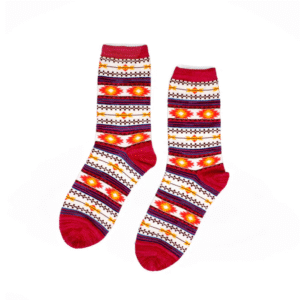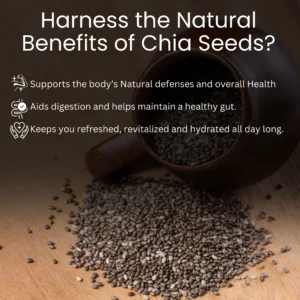You’ve launched a Facebook ad. You waited. Clicks came trickling in. But… no conversions. Frustrating, right? Been there, done that, and probably swore you’d never throw money at that blue app again. But here’s the thing—Facebook Ads can work. When done right, they can work like magic. The secret? It lies in the details.
Now, if you’re managing your ads through Facebook Ads Manager for Business, you already have access to a powerhouse tool. It offers targeting precision, audience segmentation, and real-time tracking—you name it. But the platform is only as good as the strategy behind it. So, let’s dig in and figure out what makes a Facebook ad campaign convert. Not just get seen. Not just earn clicks. Convert.
1. Knowing Your Audience Like They’re Your Best Friend
Let’s start with the basics. If your ad speaks to everyone, it’ll resonate with no one. This is where audience research becomes non-negotiable. Facebook gives you hyper-detailed targeting options—demographics, interests, behaviours, job titles, and even relationship status (yep, it’s that deep).
The difference between a marketing campaign that flops and one that crushes it? Understanding who you’re talking to and why they must care. Picture your perfect patron: What are their day-by-day struggles? What excites them? Are they scrolling Facebook at 10 p.m. Seeking out thought, or are they evaluating alternatives on their lunch destroy?
Pro tip: Split-test your audiences. Even small tweaks—like concentrating on “health enthusiasts” versus “CrossFit athletes”—can dramatically shift overall performance. Facebook Ads Manager makes this trying-out system pretty painless.
2. Creatives That Stop the Scroll
Let’s face it: Facebook is a battlefield of distractions. Between baby photos, memes, and someone’s vacation in Bali (ugh), your ad has milliseconds to catch attention.
You need a hook—and it better be good. Whether it’s an eye-popping image, a punchy headline, or a quirky video that makes people double-take, the goal is to get the scroll to stop. Think: “Wait, what’s this?”
Don’t overthink it. Real people like real content. Sometimes, raw phone-shot videos outperform polished studio productions. Add subtitles to videos (most users watch with the sound off), use bold colours, and keep the copy conversational. No corporate-speak allowed.
Also, emojis? They’re not just for texts. When used sparingly and appropriately, they can make your ads feel more relatable.
3. Ad Copy That Feels Like a Conversation
Here’s a truth bomb: people don’t read Facebook ads like they read blog posts. They skim. That means your copy needs to get to the point—fast.
Good ad copy doesn’t feel like an ad. It feels like a friend giving advice. Use everyday language. Don’t be afraid to ask questions. Play with tone. Sound excited if you’re offering something exciting.
Instead of this:
“Introducing our premium, top-tier productivity software with integrated AI features.”
Try this:
“Feel like you’re always behind? We get it. That’s why we built this tool to help you take back your time (and your sanity).”
See the difference?
Also, don’t sleep on the CTA (Call to Action). Make it clear and specific. “Shop Now” is okay. But “Grab Your Free Trial Today” is better. Give people a reason to act now, not later.
4. Trust Signals That Build Confidence
People are sceptical. With so many ads floating around, it’s easy to get burned—or just ignore everything altogether. So your ad better comes with proof.
What works? Social proof. Testimonials. Before/after photos. Case studies. Real user reviews. Logos of companies you’ve worked with. Anything that shows “Hey, we’re legit.”
Even just a quick quote from a happy customer in the ad copy can tip someone toward clicking. Don’t be shy about showing results. It’s not bragging if you can back it up.
5. A Killer Landing Page (Yes, It Matters!)
So your ad was and someone clicked. Now what? If your landing page is a mess—too slow, too cluttered, too vague—you’ll lose them in seconds.
Consistency is key. If your ad promises “30% Off Eco-Friendly Water Bottles,” the landing page better deliver exactly that. Match the messaging. Match the vibe. Match the expectation.
And please, for the love of conversions—make sure your page loads fast on mobile. The majority of Facebook traffic is mobile, so a slow, clunky site is the fastest way to tank your ROI.
6. Retargeting: Don’t Let Warm Leads Go Cold
Ever clicked an ad and didn’t buy right away… only to get followed around by that product for the next week? That’s retargeting. And yes—it works.
Using a social ad agency can help set this up properly if you’re not familiar. But even if you’re DIY-ing it, Facebook Pixel is your friend. Install it. Track your visitors. Then create custom audiences of people who viewed your ad, clicked through, or added to the cart but didn’t purchase.
Sometimes, all it takes is a second (or third) look with a slightly different message to seal the deal. Add urgency. Offer a discount. Remind them what they’re missing.
7. Data-Driven Decisions (Not Gut Feelings)
Look, intuition is great. But Facebook ad success isn’t about hunches—it’s about numbers. Dive into your Ads Manager regularly. What’s working? What’s not?
Check your CTR (click-via charge), CPC (price in line with click-on), CPA (fee in line with acquisition), and ROAS (return on ad spend). If something’s flopping, pause it. If it’s thriving, scale it.
Testing is exceptional buddy. Test headlines. Test pictures. Test CTAs. A/B trying out isn’t attractive, however, it’s the foundation of each excessive-converting marketing campaign accessible.
Final Thoughts: It’s a Blend, Not a Silver Bullet
Want your Facebook ad marketing campaign to convert? There’s nobody-size-fits-all formulation. It’s a mix of creativity, targeting, psychology, and information. Some trial and mistake, a chunk of instinct, and a whole lotta persistence.
Whether you’re walking your very own campaigns via Facebook Ads Manager for Business, or getting a few assists from a social ad employer, just understand: every successful ad marketing campaign starts with a person willing to experiment, test, and examine.








